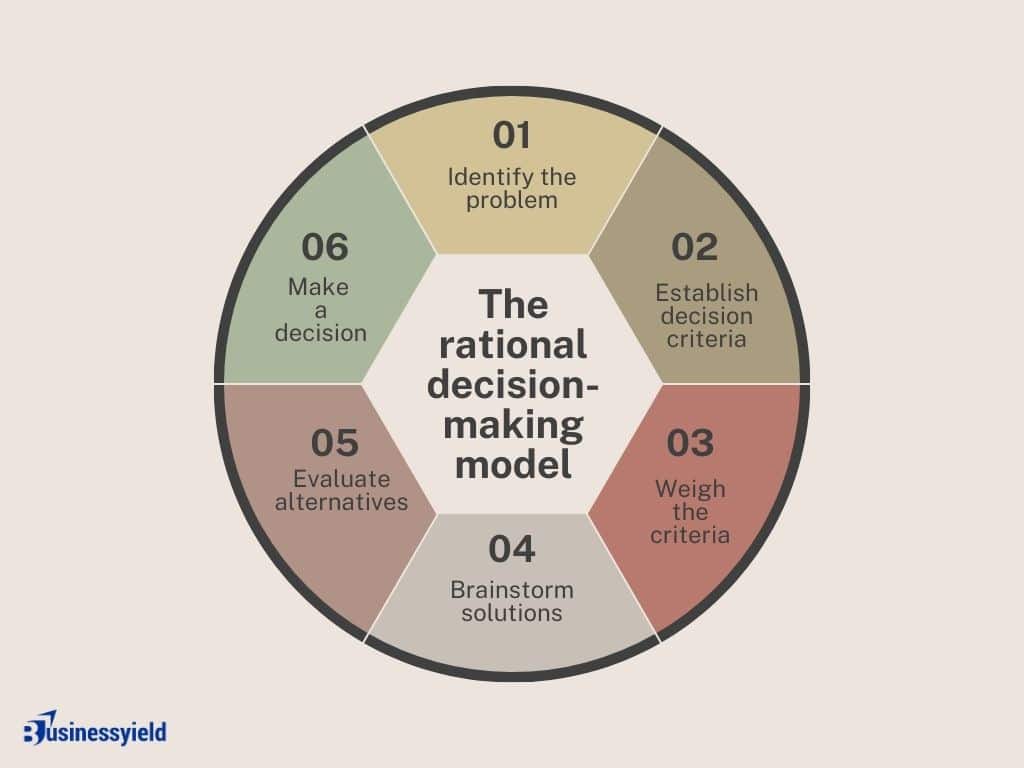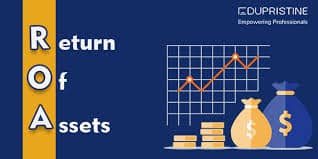The rational decision-making model sounds pretty straightforward: making choices based on logical and objective reasoning rather than emotions or personal biases. Reviewing each step analytically before making them. Thinking with the head rather than the heart.
However, just because it sounds straightforward doesn’t mean it is straightforward; I wouldn’t be writing an article on it otherwise. And even if it were, not everyone is adept at separating their emotions from the decision-making process. And even those that claim to be sometimes end up getting caught up in their emotions or going with their gut feelings.
Now, this is not to say that there is anything wrong with the latter; sometimes, you might just have this… sense about how something is supposed to go. Some people are instinctive like that. But, most times, it is hard to beat cold, hard facts.
Hence, this article is two-fold. I will be elaborating on the nuances of the rational decision-making process, and how to go about it.
Key takeaways
The rational model of decision-making uses logical steps to select the best possible solution.
It applies careful, methodical steps, and the more carefully and strictly these steps are followed, the more rational the process is.
The rational decision-making model begins with a problem, followed by multiple steps of analysis.
Depending on the decision, you may use the rational decision-making model to justify your intuitions.
Understanding the rational decision-making model process
The rational model of decision-making uses logical steps to select the best possible solution. It involves analyzing multiple alternatives and using credible data or facts to choose among options. It applies careful, methodical steps, and the more carefully and strictly these steps are followed, the more rational the process is.
Rational decision-making is a precise process that many teams use when they have time to research solutions and discuss possible outcomes. Its purpose is to maximize the benefits and minimize the costs of decisions by being objective.
The rational model of decision-making involves reasoning, facts, and data. In comparison, intuitive decision-making involves choosing among options without relying on reasoning or analysis. It involves unconsciously recalling a memory or relying on emotions to make decisions. Both rational and intuitive decision-making models are useful at work.
Steps in the rational decision-making model

The rational decision-making model begins with a problem, followed by multiple steps of analysis. These include:
1. Identify the problem
Form a clear definition of what your problem is. In more complex situations, make sure you can label your problem in clear, simple terms.
Let’s say you’re assigned the task of helping a team member improve their work ethic. After looking into the issue, you might find that their work ethic is there, and the problem is actually that they don’t understand how to use other departments to close deals. In this case, the solution might be extra training — not pushing them to work harder.
2. Establish decision criteria
In this step, the decision maker needs to determine what is relevant in making the decision. This step will bring the decision maker’s, and any other stakeholder’s, interests, values and preferences into the process.
Let’s say you have to choose between two potential clients because of a conflict of interest. Consider the following factors as starting points:
- Financial impact — How your decision affects you and your company in terms of monetary value.
- Client impact — How your decision will impact your relationships with existing clients.
- Coworker impact — How your decision will affect the people you work with.
- Personal impact — How your decision affects your personal well-being and career trajectory.
- Reputational impact — How your decision affects your reputation in your industry, as well as your company’s reputation.
- Precedential impact — How your decision affects future decisions. This is especially true in contract negotiations, where things you agree to can be used as precedents in the future.
- Cost impact — How your decision affects your money and other resources.
- Environmental impact — How your decision affects the environment.
3. Weigh the criteria
Next, rank your decision criteria based on factors that are more important to decision-making. To complete this stage, you typically need analytical and critical thinking skills. While analytical thinking involves analyzing a problem and finding a solution, critical thinking involves applying reasoning to reach a conclusion.
4. Brainstorm solutions
Now that your information is organized, you can start brainstorming potential alternative solutions. Research how other similar cases in your industry played out and ask friends and coworkers how they’ve handled similar situations.
When brainstorming, aim to provide evidence on why they can help reach your goal or overcome your obstacle. Completing this step often requires creative thinking and research skills to identify feasible solutions.
If you’re stuck, try to come up with BAD ideas to get them out of the way and get the process started. Approach the problem from the other party’s perspective, too, to come up with ideas — you might find that by considering their position, you can come up with a well-rounded solution.
5. Evaluate alternatives
After creating a somewhat full list of possible alternatives, each alternative can be evaluated. Which choice is most desirable and why? Are all of the options equally feasible, or are some unrealistic or impossible? Now is the time to identify both the merits and the challenges involved in each of the possible solutions.
Review these pros and cons based on your criteria. Note which ideas have pros in the areas you care about most to identify the most effective decision.
6. Make your final decision
This is the part where you make your final decision. Use these steps to land on the best alternative:
- Walk through the aftermath and consequences of each decision.
- Think about both the short- and long-term consequences of each.
- Weigh the pros and cons of each potential solution.
- Do a trial run where you imagine you make your decision. Are you happy with the outcome?
Choosing one client over the other might have good short-term benefits, but how will it affect your company in the long term? After careful analysis, you might find that the other client is the most well-connected client in your industry and that their partnership could lead to plenty of future business. Make sure to weigh your options to determine the better decision during this thought process.
Once you’ve run through these steps, you’ll be ready to make your final decision.
Implementing the rational decision-making process
Tips to improve your decision-making process
The rational decision-making model is invaluable, but it can be challenging to follow. Sticking to objective information and considering all factors is easier said than done. The tips below will help you use solid reasoning and problem-solving, no matter what decision you’re facing.
- Take your time. Making rational decisions takes time. Don’t feel the need to rush yourself; make sure you have enough time to make your decision. After all, you’re the one who will have to live with the consequences. Rushed decisions might lead to the wrong outcome, which you can avoid if you take your time.
- Reflect on past rational decisions. Look at your past rational decisions and see how the importance of your criteria (ranking, outcomes, consequences) has changed. What factors did you prioritize in the past, and did that prioritization pay off? You might realize that your priorities have changed or should change.
- Use research tools to do some of the work for you. To form rational decisions, you need to research possible solutions and their pros and cons. You can make that process simpler by using AI research tools.
Here are essential points to note when implementing the rational decision-making model:
- Ensure you can identify all relevant criteria and alternatives for the decision you want to make.
- Check that you can order the decision criteria and alternatives you develop.
- Check that the decision criteria and the importance assigned to each factor remain the same over time.
- Verify the time available to decide between alternatives and ensure no constraints can limit your choices.
- Ensure the strategy you choose can provide the highest value.
Other essential decision-making models
Aside from the rational decision-making model, here are other important models you may use for a specific team or situation:
Intuitive decision-making model
The rational model of decision-making involves reasoning, facts, and data. In comparison, intuitive decision-making involves choosing among options without relying on reasoning or analysis. It involves unconsciously recalling a memory or relying on emotions to make decisions.
Both rational and intuitive decision-making models are useful at work.
For example, you can typically use the rational model of decision-making when creating strategic plans, such as deciding whether to merge with another company. In comparison, you can use the intuitive decision-making model to make instinctive decisions, such as suddenly opening the door because you sense a colleague you can’t see is around it.
Depending on the decision, you may use the rational decision-making model to justify your intuitions.
Creative decision model
This model uses original ideas to create innovative solutions for reaching a goal or overcoming a challenge. It involves reflecting on a situation and developing a solution without relying on similar situations or experiences. The creative decision model is common when dealing with a new challenge or project. It typically requires you to be flexible and creative.
Here are the steps for implementing the creative decision model at work:
- Understand the goal or challenge: Clearly defining the goal or challenge is important, as you may not have experience with it yet. You may collaborate with team members or professionals or conduct extensive research.
- Identify the relevant information: Learn about the factors that can impact your outcomes. You can check similar projects, reports, or companies for inspiration on the details you need.
- Evaluate the information you identify over time: Assess the information you gather and determine how long to evaluate it carefully. This stage also requires you to work with team members and obtain expert advice.
- Create a practical solution: Using your creative skills, develop a solution or strategy. Reflecting on the available information can increase your chances of naturally developing the idea you need.
- Make your decision: After considering the solution, take the required action. It may be helpful to prepare a draft or presentation of your thought process and check that it’s accurate.
Recognition-primed decision model
This decision-making model requires you to use your quick-thinking skills and experience. It is typically valuable for fast-paced work environments, where you can expect to make several vital decisions.
Implementing the recognition-primed decision model often requires extensive experience with the goal or challenge of developing suitable solutions. It involves iterative steps.
Here are the steps to use this decision-making model at work:
- Define your goal or objective. Understand the task to complete or the challenge to overcome. For example, the goal may be to rescue an individual from a fire or stop a production machine.
- Consider similar situations and relevant information. Using your experience, quickly evaluate the situation. You can determine what information or prior situation can help develop a solution.
- Create a potential solution. Next, develop at least one potential solution based on patterns you identified from your experience. You can make the first solution generic and change or update it later.
- Check whether the solution works. Think about the solution to determine whether it can solve the challenge or reach the goal. You can first consider the most important issues and evaluate whether the solution addresses them.
- Change the solution. Challenge the solution if you want to confirm it’s the best possible outcome. You can alter it by making it more specific or adding new actions.
- Finalize your decision. Take the required action once you’re confident in your final solution.






